I love fruit of almost every shape and variety. One of the things I loved about Cambodia, besides the truly amazing folks I met there, was the fruit.
You only had to go a minute or two down any road before you would come across a fruit market with some of the most gorgeous and, I soon learned, delicious fruit you've ever met. My ho-hum "Oh yes, I like fruit" attitude quickly transformed into a renewed passion for fruit of every kind.
Except Durian. Maybe we'll talk about Durian some Fruity Fun Friday. Don't expect recipes.
Since returning home, I have made an effort to incorporate more fruit into our meals and to keep an eye out for any new varieties needing to be tested. So we'll take a look at a different fruit each Fruity Fun Friday. Some will be familiar to us and hopefully we'll discover some new fruit friends to keep a lookout for at the grocery store. We'll learn a bit about the featured fruit and if possible I'll share a recipe with you. Some fruits I simply won't be able to locate in my neck of the woods but that doesn't mean we can't get acquainted. And just so you know, Fruity Fun Friday will be a recurring though not weekly feature.
So let's look at our inaugural fruit, the Asian Pear.
Pear season is just beginning to get started and a nice progression of pears will be available from now with the arrival of Bartlett through winter with the Anjou . But what about those pear-ish apple-like things that you frequently see lovingly wrapped in their own cushy mesh net?
Asian Pears. Apple pears. Chinese, Japanese, Sand, or Nashi Pear. Delicious pears.
Asian pears have a very crispy texture and are very sweet and juicy. Their flavor is milder than the pears with which you may be familiar and are harvested ripe instead of green. While Asian pears have a longer shelf life than most pears the skins are more likely to bruise, which is the explanation for the cuddly nets. Asian pear trees are very labor intensive, requiring regular rather aggressive pruning in order to produce larger fruit. As a result yield per tree is low. The low yield and popularity of Asian pears combine to drive the cost of our Asian friend fairly high. This week they were $2.00 USD a pound at my local grocery store. However .... they really are delicious and so I fork out the cash.
 |
| from Wikimedia Commons |
Nutritionally, Asian pears ring in at about 50 calories each and are a good source of fiber as well as Vitamins C and K. And they are so juicy.
Alright-- let's talk business. What about eating Asian pears?
Asian pears are generally eaten raw, alone or in salads and slaws, as cooking them tends to destroy their unique crispy-crunchy texture.
I started with the slaw recipe from the CDC's great website Fruits and Veggies Matter. I did make a couple personal preference tweaks and those are reflected in the recipe below. An Internet search will bring you some really yummy looking possibilities and I may have to save my allowance for more Asian pears.
Asian Pear Slaw with Chilies
2 stalks of celery, sliced very thinly
2 tbsp seasoned rice vinegar
3 tbsp lime juice
1 tsp crystallized ginger root, minced
2 Asian pears, peeled and sliced 1/4-inch thick
1/3 cup Vadalia onion
1/4 cup fresh Cilantro leaves
1/2 tsp Jalapenos, minced
Whisk together the liquids then add the remaining ingredients. Let stand at room temperature for about 15 minutes to allow the flavors to develop.
The first thing you notice when tasting this slaw is the crispiness and mildness of the pears, followed by the tangy lime juice. And then the jalapenos sneak up on you. It's delicious.
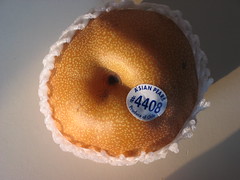 Image by acloudman via Flickr
Image by acloudman via FlickrSo thanks for stopping by today. Hope you enjoyed our first Fruity Fun Friday and I look forward to seeing you again.

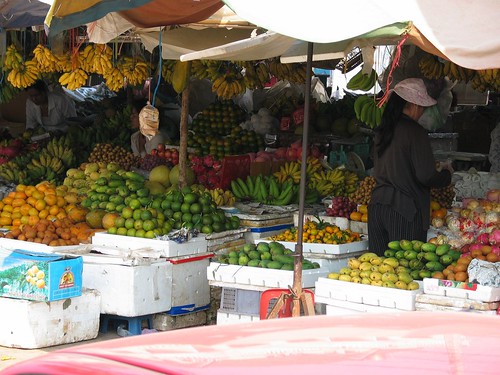
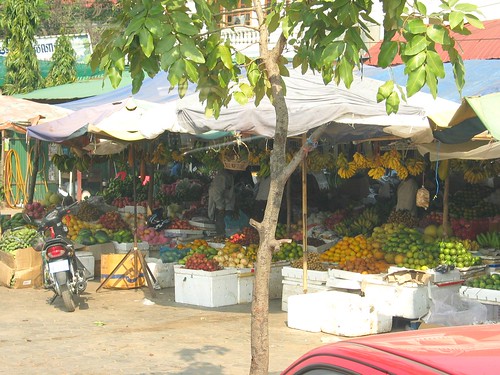

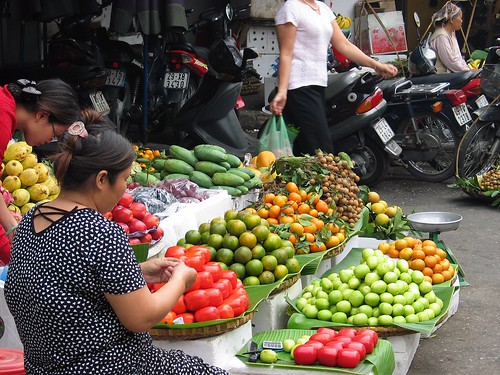
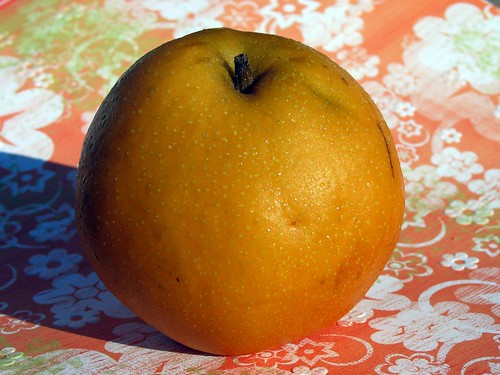
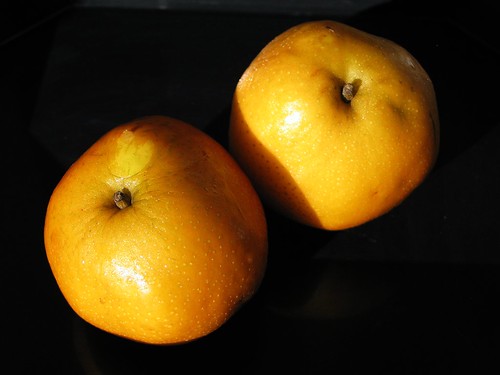

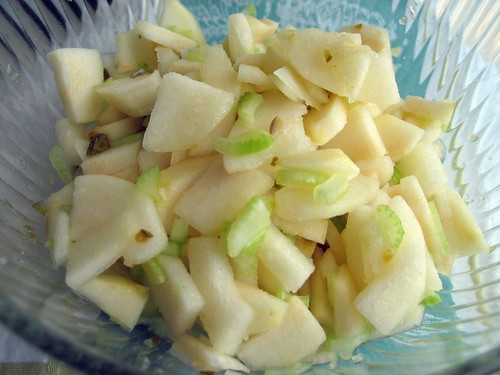

No comments:
Post a Comment